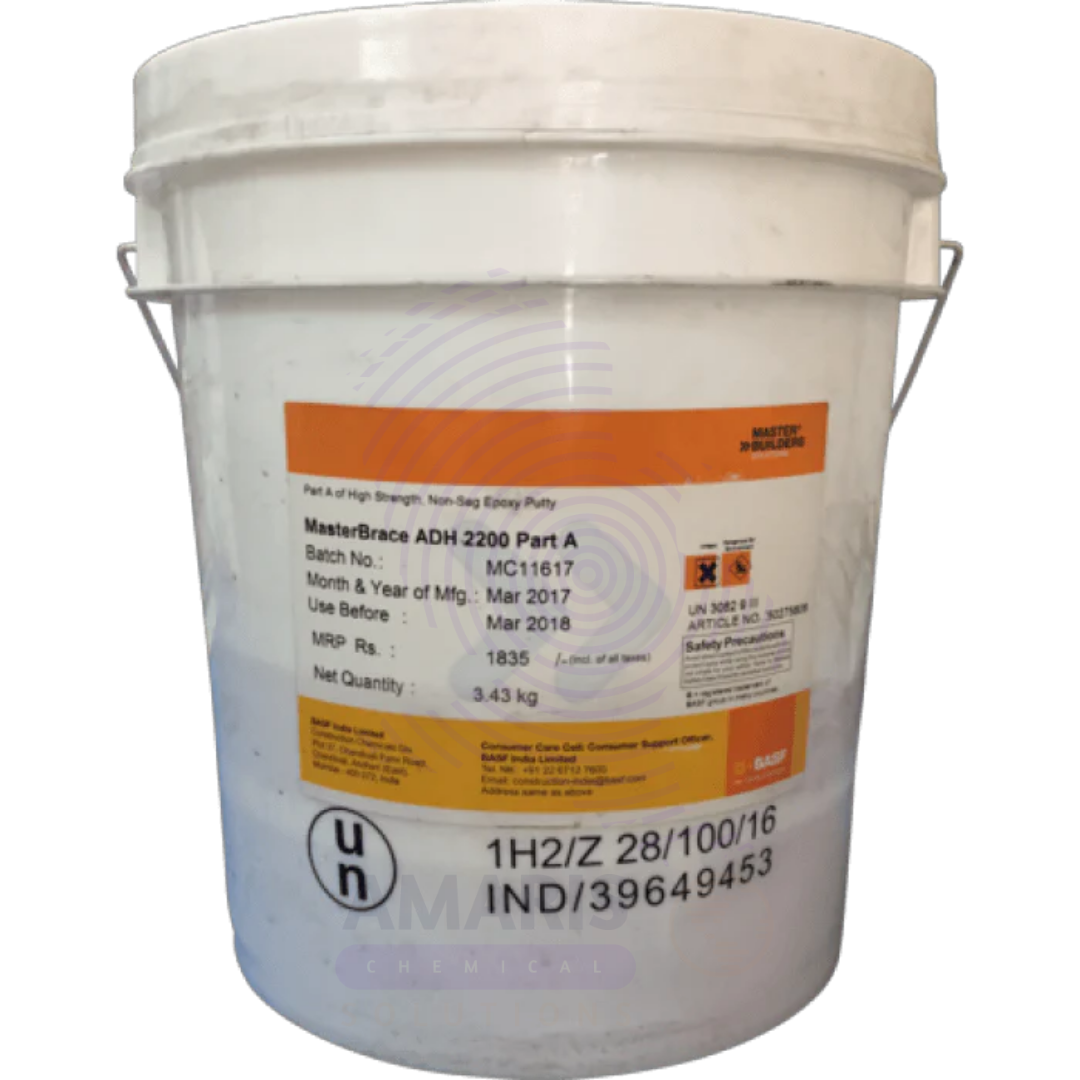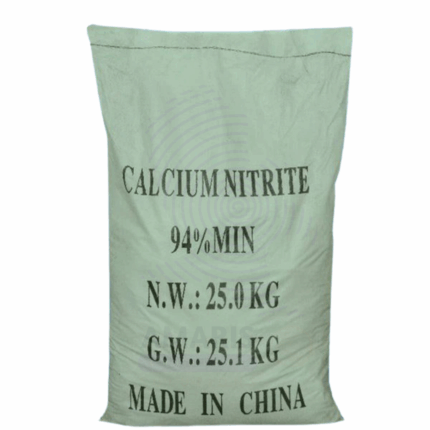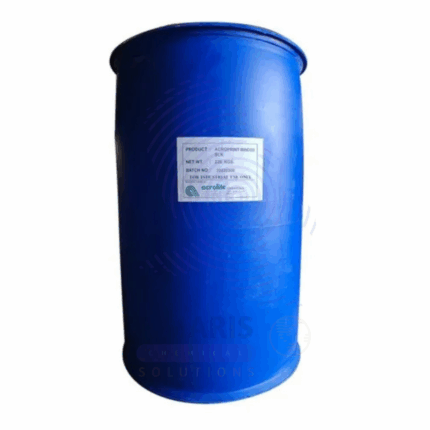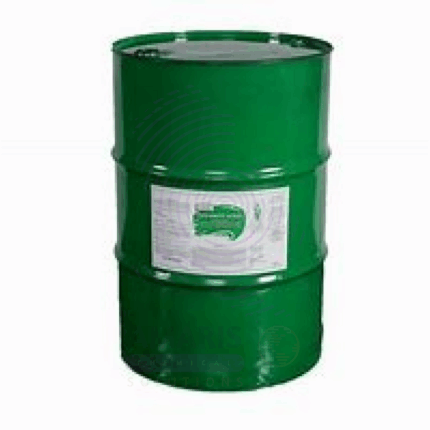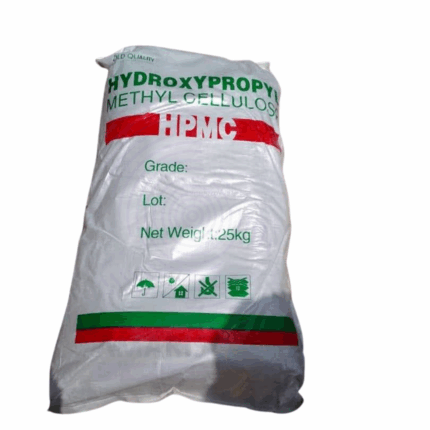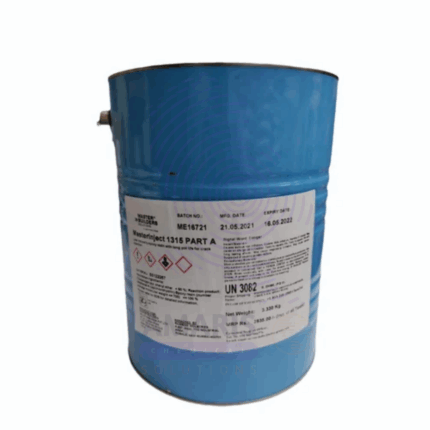“Adipic Acid” has been added to your cart. View cart
Master Brace ADH
Whatsapp Order
Master Brace ADH is a high-strength adhesive designed for bonding construction materials such as concrete, metal, wood, and stone. It is formulated to provide superior adhesion, fast curing, and excellent durability, making it suitable for both indoor and outdoor applications. The adhesive offers resistance to moisture, temperature variations, and mechanical stress, ensuring long-lasting bonds in demanding construction environments.
Description
Table of Contents
Toggle
Master Brace ADH
Primary Uses
- Construction & Building
- Structural Bonding: Used for bonding concrete, bricks, and blocks in structural repairs and new construction work.
- Surface Bonding: Adheres wood, metal, stone, and tiles to various substrates in flooring, wall panels, and decorative applications.
- Crack and Gap Filling: Suitable for filling and sealing cracks or gaps in masonry or concrete surfaces to enhance stability.
- Industrial Manufacturing
- Assembly Adhesive: Applied in prefabrication of building components and fixtures requiring strong, durable bonds.
- Equipment Repair: Used to fix broken or damaged metal, plastic, or composite parts in industrial settings.
Secondary Uses
- DIY and Home Improvement
- Furniture Repair: Employed for fixing wooden furniture joints and attaching decorative moldings.
- Craft Applications: Utilized in art and craft projects requiring strong, permanent adhesion between mixed materials.
- Marine and Automotive
- Moisture-Resistant Bonding: Suitable for bonding materials exposed to humidity or occasional water contact, such as boat interiors or vehicle panels.
PRODUCT KEY FEATURES
- Basic Identification Attributes
- Chemical Name (IUPAC): Proprietary adhesive polymer blend
- Common/Trade Name: Master Brace ADH
- CAS Number: Not applicable (mixture)
- HS Code: 3506.91.00 (Adhesives based on polymers)
- Synonyms: Construction adhesive; structural adhesive; multipurpose bonding agent
- Physical & Chemical Properties
- Physical State: Viscous liquid or paste
- Color & Odor: Typically off-white or beige; mild characteristic odor
- Curing Time: Fast setting, typically within 30-60 minutes depending on conditions
- Solubility: Insoluble in water after curing
- Temperature Resistance: Stable between -20°C and 80°C
- Safety & Hazard Attributes
- GHS Classification: May cause skin and eye irritation; flammable in some formulations
- Toxicity: Low acute toxicity; avoid ingestion and prolonged exposure
- Exposure Limits: No specific occupational limits; follow good industrial hygiene
- Storage & Handling Attributes
- Storage Conditions: Store in cool, dry place away from direct sunlight and heat sources
- Container Type: Supplied in sealed plastic cartridges, tubes, or pails
- Shelf Life: 12 months from manufacturing date when stored properly
- Handling Precautions: Use gloves and avoid skin contact; ensure adequate ventilation during application
- Regulatory & Compliance Attributes
- Complies with relevant construction chemical safety standards
- Meets VOC emission limits as per environmental regulations
- Environmental & Health Impact
- Biodegradability: Not readily biodegradable; dispose of waste responsibly
- Ecotoxicity: May be harmful to aquatic life if released untreated
- Bioaccumulation: Not expected
SAFETY HANDLING PRECAUTIONS
- Safety Handling Precautions
PPE Required:
- Gloves, safety goggles, and respirators if ventilation is poor
Handling Guidelines:
- Avoid inhalation of fumes; wash hands after use
Storage Measures:
- Keep containers tightly closed; avoid contact with incompatible materials
- First Aid Measures
- Inhalation: Move to fresh air; seek medical advice if irritation persists
- Skin Contact: Wash with soap and water; consult a doctor if irritation develops
- Eye Contact: Rinse with plenty of water for 15 minutes; seek medical attention
- Ingestion: Do not induce vomiting; seek immediate medical help
- Firefighting Measures
- Fire Hazards: May be combustible; avoid open flames and sparks during use
- Extinguishing Media: Use foam, dry chemical, or CO₂ extinguishers
- Special Precautions: Use self-contained breathing apparatus if involved in fire
- Hazardous Combustion Products: Carbon oxides, smoke, and irritating fumes
Related products
Binder
A binder is a broad category of substances—organic or inorganic—used to hold different materials together in a cohesive mass. Common binders include natural polymers (starch, cellulose derivatives, proteins), synthetic resins (PVA, acrylics, phenolics), and inorganic binders (clays, cement, lime). They are essential in industries such as pharmaceuticals, construction, coatings, ceramics, adhesives, and printing, where they provide structural integrity, adhesion, and controlled release properties.
Clear Emulsion
Clear Emulsion is a transparent or translucent mixture of two immiscible liquids—typically oil and water—stabilized by emulsifying agents to form a stable, homogenous system. This product is widely used in cosmetics and personal care, pharmaceuticals, and specialty industrial applications due to its lightweight texture, ease of absorption, and aesthetic appeal. Clear emulsions offer a visually appealing, non-greasy feel with the advantages of both oil and water phases, delivering moisturizing, protective, and active ingredient-carrying benefits. Their clarity distinguishes them from traditional creamy emulsions, making them popular in modern skincare and cosmetic formulations.
HPMC Vivapharm
HPMC Vivapharm is a high-quality, pharmaceutical-grade hydroxypropyl methylcellulose polymer widely used as an excipient and functional ingredient. It appears as a fine, white to off-white, odorless powder with excellent solubility in cold water and forms clear, viscous solutions. This cellulose ether derivative offers excellent film-forming, thickening, emulsifying, and controlled-release properties. Vivapharm E50 is prized in pharmaceutical, food, and cosmetic industries for its versatility, stability, and safety profile.
Hydroxyethyl Cellulose
Hydroxyethyl Cellulose , marketed under brand names such as Natrosol, is a non-ionic, water-soluble polymer derived from cellulose by reacting alkali cellulose with ethylene oxide. It appears as a white to off-white, free-flowing powder with excellent thickening, binding, and film-forming properties. HEC is widely used as a rheology modifier and stabilizer due to its high water retention, solubility, and compatibility with a broad range of ingredients. It is valued in many industries including cosmetics, pharmaceuticals, paints, adhesives, and personal care products.
Hydroxypropyl Methylcellulose HPMC
Hydroxypropyl Methylcellulose HPMC, also known as hypromellose, is a semi-synthetic, non-ionic cellulose ether derived by chemically modifying cellulose through methylation and hydroxypropylation. It is a white to off-white, odorless, tasteless powder that dissolves in cold water to form clear, viscous solutions. HPMC is renowned for its thickening, film-forming, emulsifying, and controlled-release properties. It is widely used in pharmaceuticals, food, cosmetics, construction, and industrial applications due to its safety profile, versatility, and compatibility with various ingredients.
Master Finish 202
Master Finish 202 is a premium finishing compound formulated to deliver a smooth, glossy, and durable surface on various materials including wood, metal, and plastics. It offers excellent adhesion and resistance to abrasion, moisture, and environmental factors. Suitable for industrial and commercial applications, Master Finish 202 enhances both the appearance and longevity of finished products.
Master Inject
Master Inject is a premium chemical grout designed for sealing, stabilizing, and strengthening concrete and masonry structures. It is a low-viscosity, high-penetration injection resin that fills cracks, voids, and cavities effectively, preventing water ingress and improving structural integrity. Master Inject is commonly used in construction repair, waterproofing, and foundation strengthening applications. Its fast-curing formula allows for rapid project completion with durable, long-lasting results.
TDI (Toluene Diisocyanate)
TDI is a highly reactive chemical compound primarily used as a key raw material in the production of polyurethane foams. It is a colorless to pale yellow liquid with a pungent odor and is valued for its ability to react with polyols to form flexible and rigid polyurethane products. TDI’s versatility makes it indispensable in industries like furniture, automotive, insulation, and coatings.


 Preservatives(food)
Preservatives(food) Flavor Enhancers
Flavor Enhancers Acidulants
Acidulants Sweeteners
Sweeteners Antioxidants
Antioxidants Colorants(food)
Colorants(food) Nutraceutical Ingredients (food)
Nutraceutical Ingredients (food) Nutrient Supplements
Nutrient Supplements Emulsifiers
Emulsifiers
 Collectors
Collectors Dust Suppressants
Dust Suppressants Explosives and Blasting Agents
Explosives and Blasting Agents Flocculants and Coagulants
Flocculants and Coagulants Frothers
Frothers Leaching Agents
Leaching Agents pH Modifiers
pH Modifiers Precious Metal Extraction Agents
Precious Metal Extraction Agents
 Antioxidants(plastic)
Antioxidants(plastic) Colorants (Pigments, Dyes)
Colorants (Pigments, Dyes) Fillers and Reinforcements
Fillers and Reinforcements Flame Retardants
Flame Retardants Monomers
Monomers Plasticizers
Plasticizers Polymerization Initiators
Polymerization Initiators Stabilizers (UV, Heat)
Stabilizers (UV, Heat)
 Antifoaming Agents
Antifoaming Agents Chelating Agents
Chelating Agents Coagulants and Flocculants
Coagulants and Flocculants Corrosion Inhibitors
Corrosion Inhibitors Disinfectants and Biocides
Disinfectants and Biocides Oxidizing Agents
Oxidizing Agents pH Adjusters
pH Adjusters Scale Inhibitors( water)
Scale Inhibitors( water)
 Antioxidants(cosmetic)
Antioxidants(cosmetic) Emollients
Emollients Fragrances and Essential Oils
Fragrances and Essential Oils Humectants
Humectants Preservatives
Preservatives Surfactants(cosmetic)
Surfactants(cosmetic) Thickeners
Thickeners UV Filters
UV Filters
 Fertilizers
Fertilizers Soil Conditioners
Soil Conditioners Plant Growth Regulators
Plant Growth Regulators Animal Feed Additives
Animal Feed Additives Biostimulants
Biostimulants Pesticides (Herbicides, Insecticides, Fungicides)
Pesticides (Herbicides, Insecticides, Fungicides)
 Active Pharmaceutical Ingredients (APIs)
Active Pharmaceutical Ingredients (APIs) Excipients
Excipients Solvents(pharmaceutical)
Solvents(pharmaceutical) Antibiotics
Antibiotics Antiseptics and Disinfectants
Antiseptics and Disinfectants Vaccine Adjuvants
Vaccine Adjuvants Nutraceutical Ingredients (pharmaceutical)
Nutraceutical Ingredients (pharmaceutical) Analgesics & Antipyretics
Analgesics & Antipyretics
 Analytical Reagents
Analytical Reagents Solvents(lab)
Solvents(lab) Chromatography Chemicals
Chromatography Chemicals Spectroscopy Reagents
Spectroscopy Reagents microbiology-and-cell-culture-reagents
microbiology-and-cell-culture-reagents Molecular Biology Reagents
Molecular Biology Reagents Biochemical Reagents
Biochemical Reagents Inorganic and Organic Standards
Inorganic and Organic Standards Laboratory Safety Chemicals
Laboratory Safety Chemicals Specialty Laboratory Chemicals(Special Laboratory Equipment)
Specialty Laboratory Chemicals(Special Laboratory Equipment)
 Demulsifiers
Demulsifiers Hydraulic Fracturing Fluids
Hydraulic Fracturing Fluids Scale Inhibitors(oil)
Scale Inhibitors(oil) Surfactants(oil)
Surfactants(oil) Drilling Fluids
Drilling Fluids
 Dyes and Pigments
Dyes and Pigments Bleaching Agents
Bleaching Agents Softening Agents
Softening Agents Finishing Agents
Finishing Agents Antistatic Agents
Antistatic Agents
 Admixtures
Admixtures Waterproofing Agents
Waterproofing Agents Sealants and Adhesives
Sealants and Adhesives Curing Compounds
Curing Compounds Concrete Repair Chemicals
Concrete Repair Chemicals Anti-Corrosion Coatings
Anti-Corrosion Coatings
 Surfactants(cleaning)
Surfactants(cleaning) Builders
Builders Enzymes
Enzymes Solvents (Cleaning)
Solvents (Cleaning) Fragrances
Fragrances
 Electronic Chemicals
Electronic Chemicals Catalysts
Catalysts Lubricants
Lubricants Photographic Chemicals
Photographic Chemicals Refrigerants
Refrigerants Automotive chemicals
Automotive chemicals Pyrotechnic Chemicals
Pyrotechnic Chemicals
 Biodegradable Surfactants
Biodegradable Surfactants Bio-based Solvents
Bio-based Solvents Renewable Polymers
Renewable Polymers Carbon Capture Chemicals
Carbon Capture Chemicals Wastewater Treatment Chemicals
Wastewater Treatment Chemicals
 Pigments
Pigments Solvents(paint)
Solvents(paint) Specialty Coatings
Specialty Coatings Binders/Resins
Binders/Resins Additives
Additives Driers
Driers Anti-Corrosion Agents
Anti-Corrosion Agents Functional Coatings
Functional Coatings Application-Specific Coatings
Application-Specific Coatings
 Fresh Herbs
Fresh Herbs Ground Spices
Ground Spices Whole Spices
Whole Spices Spice Blends
Spice Blends Dried Herbs
Dried Herbs
 Leavening Agents
Leavening Agents Dough Conditioners
Dough Conditioners Flour Treatments
Flour Treatments Fat Replacers
Fat Replacers Decoratives
Decoratives Preservatives(baking)
Preservatives(baking)
 Plasticizers & Softeners
Plasticizers & Softeners Reinforcing Agents
Reinforcing Agents Adhesion Promoters
Adhesion Promoters Vulcanizing Agents
Vulcanizing Agents Antidegradants
Antidegradants Blowing Agents
Blowing Agents Fillers & Extenders
Fillers & Extenders Accelerators & Retarders
Accelerators & Retarders